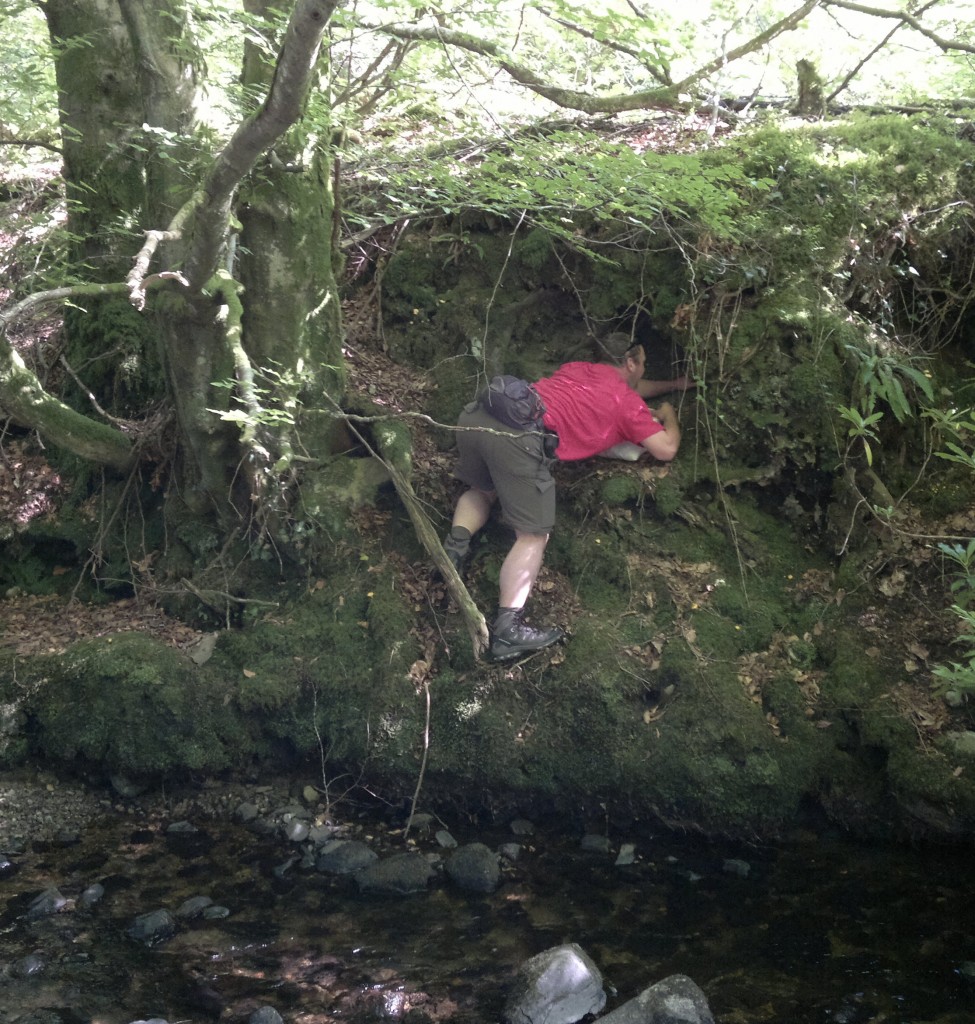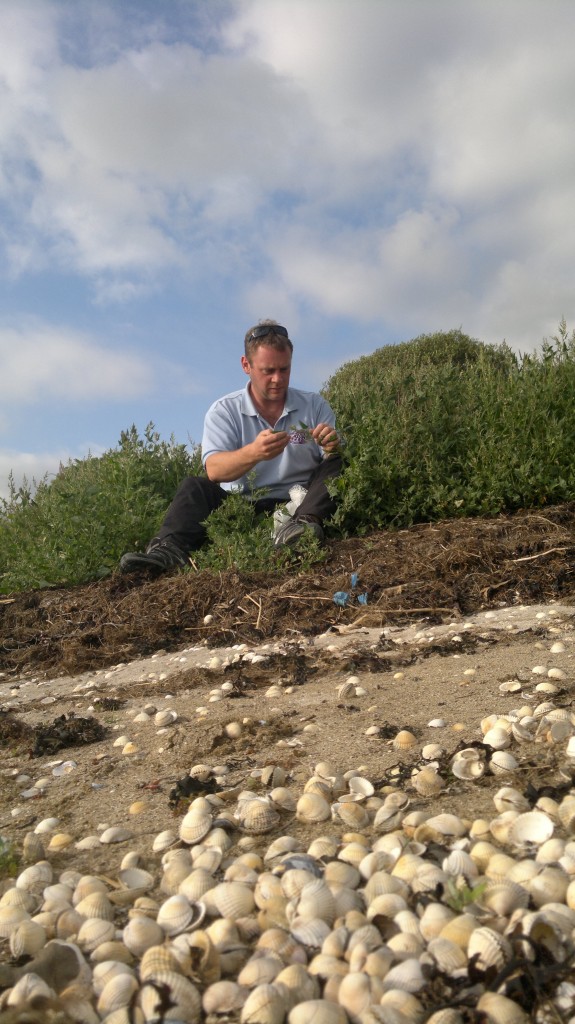Where the wild things are…
I regularly get asked – in person, on Twitter, by email or on the comments sections on this site – where to find particular wild foods. If you have asked such a question, I may well have directed you here.
If you were expecting a big map of where the ceps, oysters, sea kale or anything else is, then sorry to disappoint. This is an explanation of why I don’t tell people where to go to pick particular wild foods.
The classic response when people ask a forager where he or she picked their bounty is “In the woods”. This is the polite and mildly humourous (for the forager anyway) way of saying “YEAH RIGHT. LIKE I’M GOING TO TELL YOU WHERE MY HARD FOUND PATCH IS! Would you like my shirt and family heirlooms too?” Fungi in particular tend to bring out the secret agent in people. I have, in the past, gone to extreme lengths to cover my tracks and throw would-be rivals off my scent, and have had some crawling through the most un-fungal bramble patches you could imagine by “letting slip” red herrings. I am not so secretive now – age mellows, and there really is plenty to go around. But I still don’t divulge specific locations.
If that seems a bit odd coming from somebody who teaches about wild food, then hopefully the following points will clarify. I am delighted to teach people HOW to find wild food, but not WHERE.
1. The best moments with any wild food is when you finally locate and identify a species for yourself. I still remember everything about my first chanterelle/sea kale/cep/spoot clam etc encounters like they were yesterday. It is a special moment to finally find something you have been seeking, or stumble on something you weren’t expecting. The longer you have been looking, the better it feels. My first truffle is going to be ecstasy! Read more on this here.
2. Some wild foods are a finite resource. If everybody was directed to a particular patch, and even some of them returned on a regular basis, it wouldn’t be a patch for very long. This refers particularly to fungi.
3. The skills you need to find wild food for yourself will keep you safe. I watched hemlock, cow parsley, sweet ciceley and umpteen other umbelifers growing for many years before I unjumbled the muddle and learned to recognise distinct species. If somebody had just said “There is sweet ciceley – pick away”, would I have known it from hemlock a week later?
4. You will feel more closely connected to wild food patch you have found yourself. As a result, you will care for, cherish and enjoy it more. Some places that I regularly visit feel like old friends.
5. I use some areas as teaching resources. Directing people to them would diminish that resource.
6. I’m sorry but it just seems lazy sometimes. I honestly once got an email that read “I am running some gourmet trips around Scotland. Could you tell us where we can pick some wild food?”.
7. I very happily put lots of my spare time into this website and my twitter/facebook feeds, which I hope, in conjunction with some decent guidebooks, provide enough information to get any beginner started. I am also happy to try to help people to identify what they have found (provided they have tried to ID it for themselves first, and will not eat it based entirely on my opinion) and advise on interesting areas to explore. I carefully select sites for my guided forays (many of which are free) that will give the very best chance of learning about the wild food that we are focussing on. I think that my rates for direct tuition for individuals, families and groups in their own locality are a great value way of tapping into the wild foods that are almost certainly on your doorstep.
8. I have noticed some wild food mapping projects getting going on various websites. These are almost invariably run by lovely, knowledgeable people who have a passion for wild food. The vast majority of our wild food resources rot away each year, and these maps intend to help beginners to enjoy some of that lost bounty. For all the reasons outlined above, I decline requests to contribute while wishing them every success in spreading the pleasure of using wild ingredients.
I hope all that doesn’t sound too stuffy or pompous! To sum up my philosophy, here are a couple of things to keep in mind:
Wild food of some sort is around us nearly all the time: most of the skill and effort comes not in finding it but in recognising it.
Foraging your way through the wild food year can be like an intimate dance with nature: I can introduce you to your partner – but you have to learn the steps for yourself.
Related post: “A Meeting In The Woods”


5 Comments
Please can you advise how to eat burdock so that it does not taste bitter. Leaves microwaved 2 minutes UGH. Stems too . TRied both raw not good either. All so bitter and I di try to scrpae off the outer coat of the stems. (the stems were young (approx 4-6 inches long), so difficult to scarpe
Also I trying to find a recipe for burdock and dandelion cordial. Can yo please advise. Many thanks for your help.
Hi Celia,
Oh dear! Sounds like you aren’t getting on too well with burdock! I have to be honest and say that my practical knowledge is pretty limited with this plant. There just seem to be so many tastier, and frankly less troublesome, plants about in the spring. If you are determined to eat the shoots, blanching should reduce some of the bitterness before stir-frying. Given the option, I personally wouldn’t put any greenery in a microwave – it withers and dries plants – much better to steam or blanche. Normally I would advise finding young specimens but it sounds like you have done that already. Roots are the main edible interest, and if you can be bothered digging them up (young-uns, before they get woody), you may have more joy parboiling and roasting them – after chopping quite small.
Finally – and this isn’t very helpful – I wonder if our modern palettes are a little over-sensitised to some of the more astringent greens that would have played a big part in hunter-gatherer diets. Also, I think different people’s taste buds react slightly differently to new flavours. I for one only eat dandelion leafs as a small, bitter part of a milder, more cuddly salad.
Sorry not to be of much help!
If you google “dandelion and burdock cordial recipes” you will have your pick of any number of recipes.
Please let me know if you crack the burdock problem!
Mark.
A good and fair attitude I think!
Glad to see the blog’s still running. You must be due a really good rant sometime soon – those are the best ones. 🙂
Such a good website. So very well said. Really glad you have written so much and so informatively. Thank you.
You are very welcome, I’m glad you find it useful.
Mark.